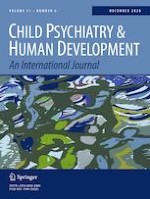14-03-2020 | Original Article
High Correspondence Between Child Behavior Checklist Rule Breaking Behavior Scale with Conduct Disorder in Males and Females
Gepubliceerd in: Child Psychiatry & Human Development | Uitgave 6/2020
Log in om toegang te krijgenAbstract
This study investigated the diagnostic utility of the Child Behavior Checklist (CBCL) Rule-Breaking Behavior scale to identify children of both sexes with conduct disorder (CD). Participants were derived from four independent datasets of children with and without attention deficit hyperactivity disorder and bipolar-I disorder of both sexes. Participants had structured diagnostic interviews with raters blinded to subject ascertainment status. Receiver operating characteristic (ROC) curves were used to examine the scale’s ability to identify children with and without CD. The sample consisted of 674 participants (mean age of 11.7 ± 3.3 years, 57% male, 94% Caucasian). The interaction to test if CBCL Rule-Breaking Behavior scores identified males and females with CD differently was not significant, thus we performed ROC analysis in the combined group. The ROC analysis of the scale yielded an area under the curve of 0.9. A score of ≥ 60 on the scale correctly classified 82% of participants with CD with 85% sensitivity, 81% specificity, 48% positive predictive value, 96% negative predictive value. The CBCL Rule-Breaking Behavior scale was an efficient tool to identify children with CD.
